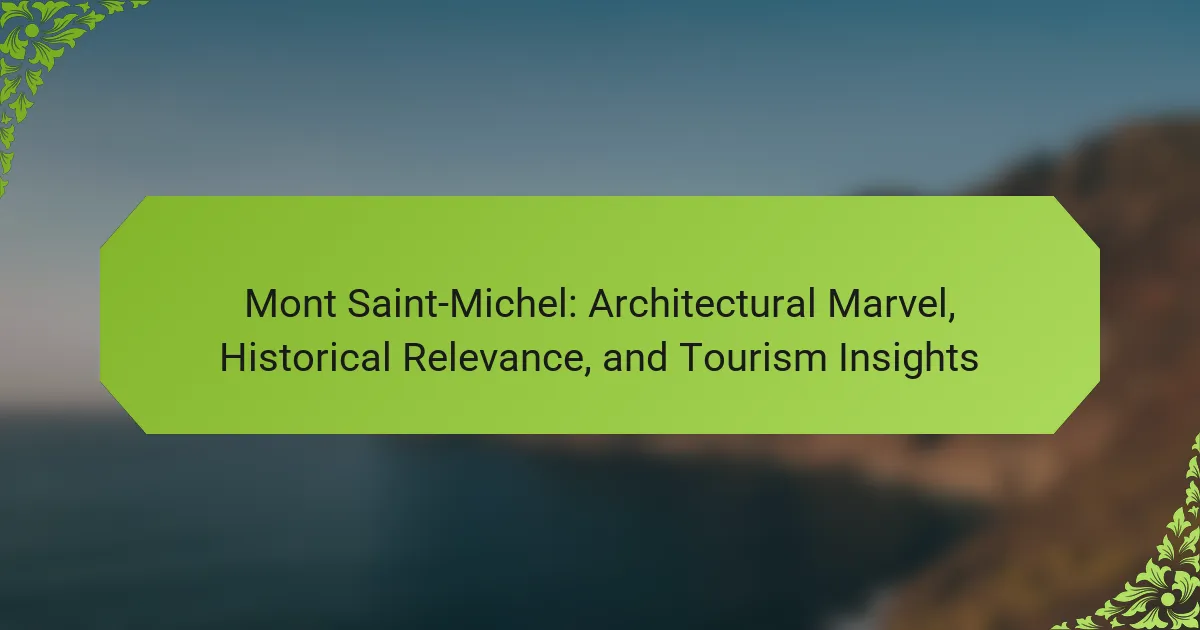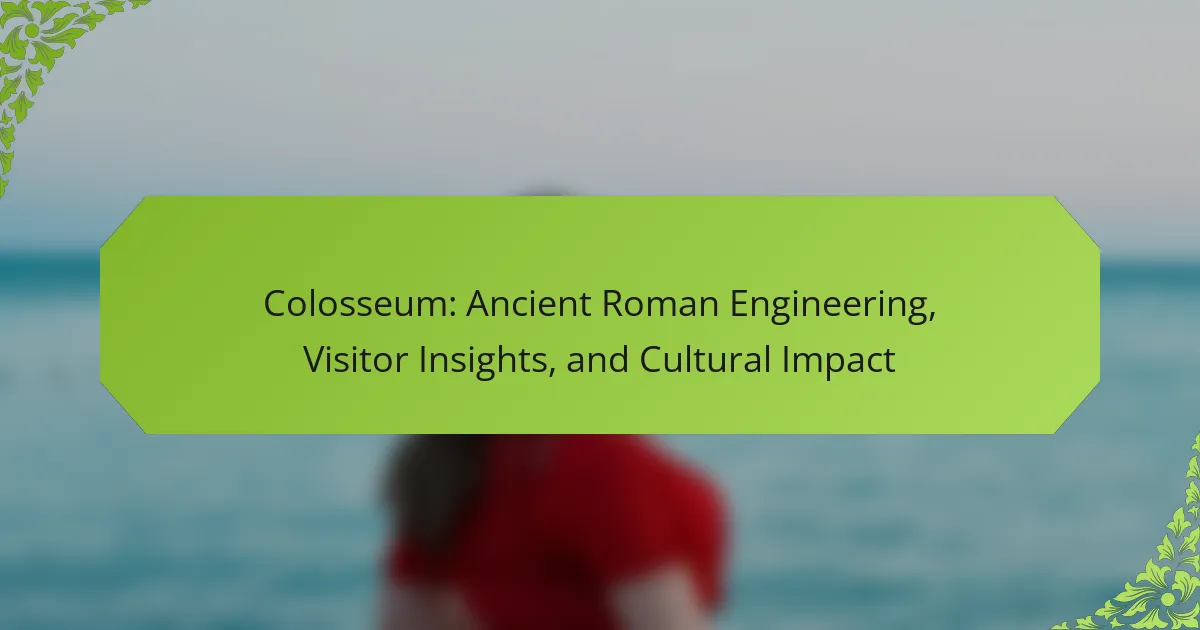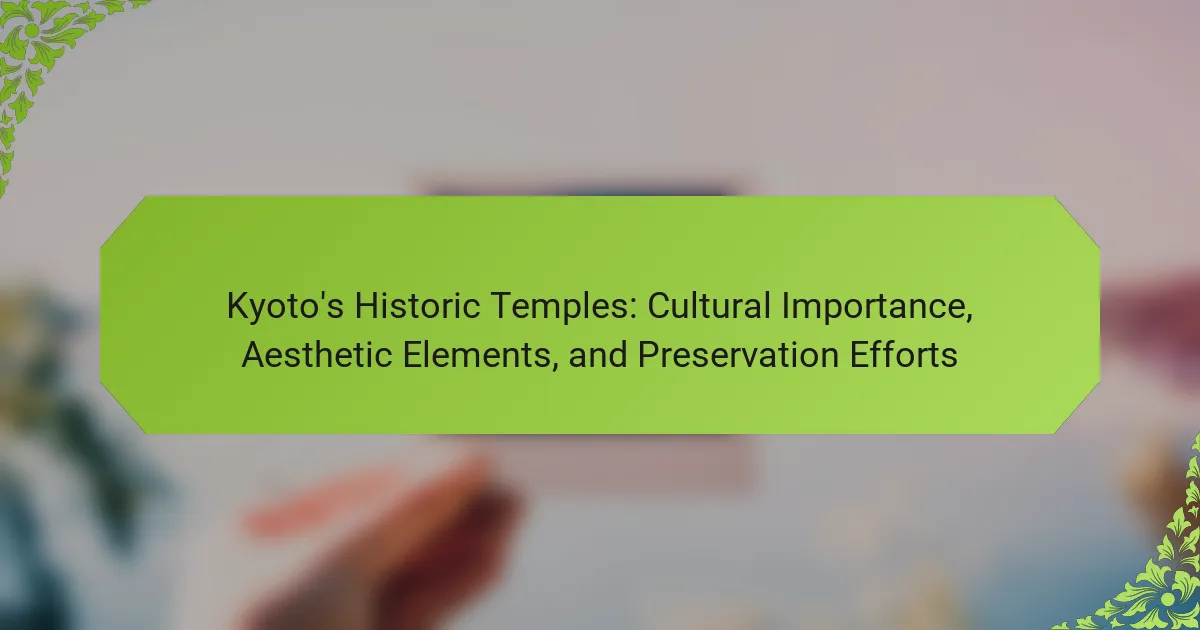Mont Saint-Michel stands as a testament to architectural brilliance and historical significance, captivating millions of visitors each year. This article explores its unique architectural features, cultural relevance, and the latest tourism trends. Discover how its stunning silhouette and rich heritage continue to inspire travelers, while sustainable practices shape its future.
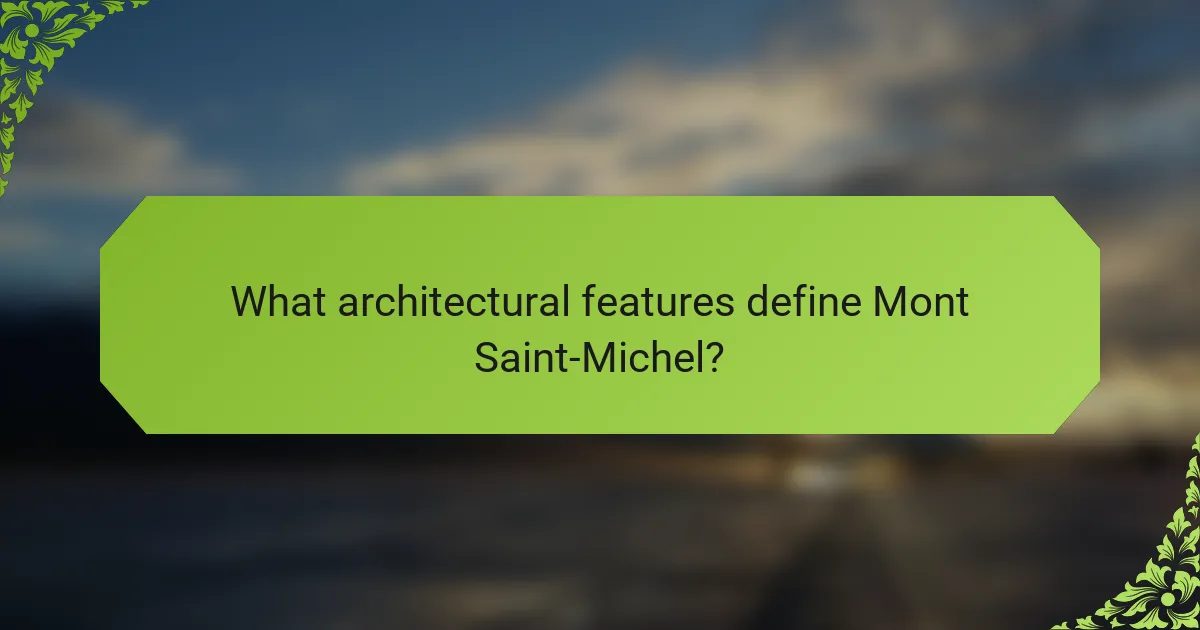
What architectural features define Mont Saint-Michel?
Mont Saint-Michel’s architectural features include its medieval abbey, fortified walls, and Gothic spires. The abbey, perched atop the island, showcases intricate stonework and flying buttresses, reflecting the unique blend of Romanesque and Gothic styles. The tidal island’s strategic fortifications were designed to protect against invasions, while its narrow streets and charming buildings enhance its historical relevance. The unique attribute of Mont Saint-Michel is its stunning silhouette, dramatically rising above the sea, which draws millions of tourists annually.
How does the design reflect medieval engineering principles?
The design of Mont Saint-Michel showcases medieval engineering principles through its strategic use of natural topography and innovative structural techniques. The island’s elevation and rocky foundation exemplify defensive architecture, while its intricate layout reflects the era’s focus on verticality and symmetry.
Key features include the use of ribbed vaults and flying buttresses, which distribute weight effectively and allow for taller, more open spaces. The integration of religious and military functions in the design highlights the dual purpose of the structure, combining aesthetics with practicality.
Additionally, the careful planning of water management systems demonstrates advanced engineering for the time, ensuring the site remains accessible while maintaining its defensive capabilities. Mont Saint-Michel serves as a testament to the ingenuity of medieval architects, merging functionality with artistic expression.
Which materials were predominantly used in its construction?
Mont Saint-Michel was predominantly constructed using granite and limestone. Granite, sourced from nearby quarries, provides durability and strength, while limestone was used for its aesthetic qualities. The combination of these materials contributes to the site’s unique architectural style and historical significance.
What are the notable structural innovations found in Mont Saint-Michel?
Mont Saint-Michel features several notable structural innovations that enhance its architectural significance. The use of Gothic architecture is prominent, particularly in the abbey’s soaring spires and intricate flying buttresses. The strategic placement on a rocky island allows for natural defense mechanisms, influencing its design. The tidal variations create a unique setting, with the structure adapting to the surrounding environment. Additionally, the integration of medieval engineering techniques, such as the use of vaulted ceilings and narrow staircases, showcases advanced construction methods for its time.

How has Mont Saint-Michel influenced cultural heritage and art?
Mont Saint-Michel has profoundly influenced cultural heritage and art through its unique architecture and historical significance. This island commune in Normandy, France, is a UNESCO World Heritage site, attracting artists and historians alike. Its Gothic abbey, perched atop a rocky hill, inspires countless artworks, literature, and photography, symbolizing perseverance and spirituality. The interplay of light and shadow on its stone façade has been a subject for many painters, while its storied past has influenced literary works across centuries. As a result, Mont Saint-Michel serves as a cultural beacon, showcasing the fusion of natural beauty and human creativity.
In what ways has it inspired literature and film?
Mont Saint-Michel has inspired literature and film through its enchanting beauty and historical significance. Its dramatic landscape and rich history have been depicted in various works, including Victor Hugo’s “The Hunchback of Notre-Dame” and films like “The Da Vinci Code.” These portrayals emphasize its unique architectural features and mystique, captivating audiences and encouraging tourism. The island’s symbolism of isolation and spirituality also resonates in many narratives, making it a powerful muse for creators across genres.
Which artists have depicted Mont Saint-Michel in their work?
Numerous artists have depicted Mont Saint-Michel, showcasing its architectural beauty and historical significance. Notable examples include Claude Monet, who captured its essence in impressionist paintings, and photographer David Leventi, known for his stunning images of the site. Other artists like Paul Signac and Gustave Courbet have also portrayed Mont Saint-Michel, contributing to its rich artistic legacy.
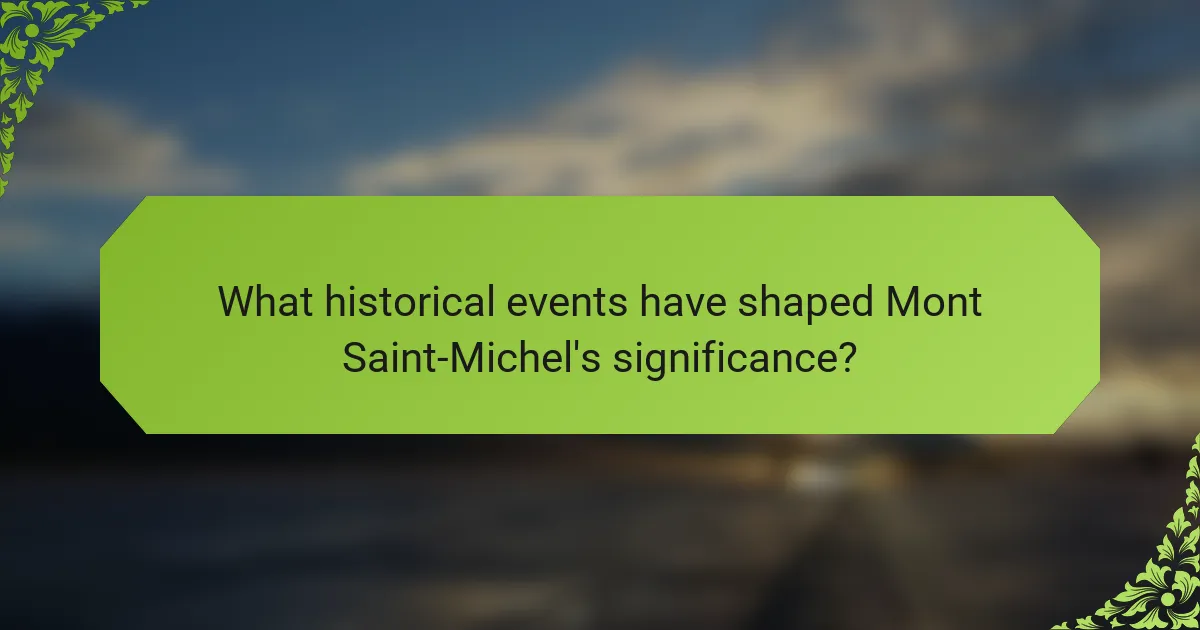
What historical events have shaped Mont Saint-Michel’s significance?
Mont Saint-Michel’s significance has been shaped by its strategic location, religious importance, and architectural innovations. The abbey was a pilgrimage site in the medieval period, attracting thousands. Its unique tidal island setting enhances its historical allure, marking it as a UNESCO World Heritage site. Over centuries, it has served as a fortification, a monastery, and a symbol of French national identity. The blend of Gothic architecture and natural beauty continues to draw tourists, reinforcing its cultural relevance.
How did it serve as a strategic fortification during conflicts?
Mont Saint-Michel served as a strategic fortification during conflicts due to its elevated position and surrounding tidal waters. The island’s natural defenses made it challenging for enemies to approach, while its architecture included thick walls and a fortified abbey. Notably, it withstood numerous sieges, including the Hundred Years’ War, showcasing its resilience. Its unique attribute as both a religious site and military stronghold contributed to its historical significance in protecting the region.
What role did it play in the religious landscape of its time?
Mont Saint-Michel played a significant role as a religious center during its time. Its strategic location made it a pilgrimage destination, symbolizing faith and resilience. The abbey served as a spiritual refuge, attracting monks and worshippers, which reinforced its influence in medieval Christianity. The architecture reflects a blend of Gothic and Romanesque styles, embodying the era’s religious aspirations. As a result, Mont Saint-Michel became a vital hub for religious activities, impacting the broader religious landscape in Europe.
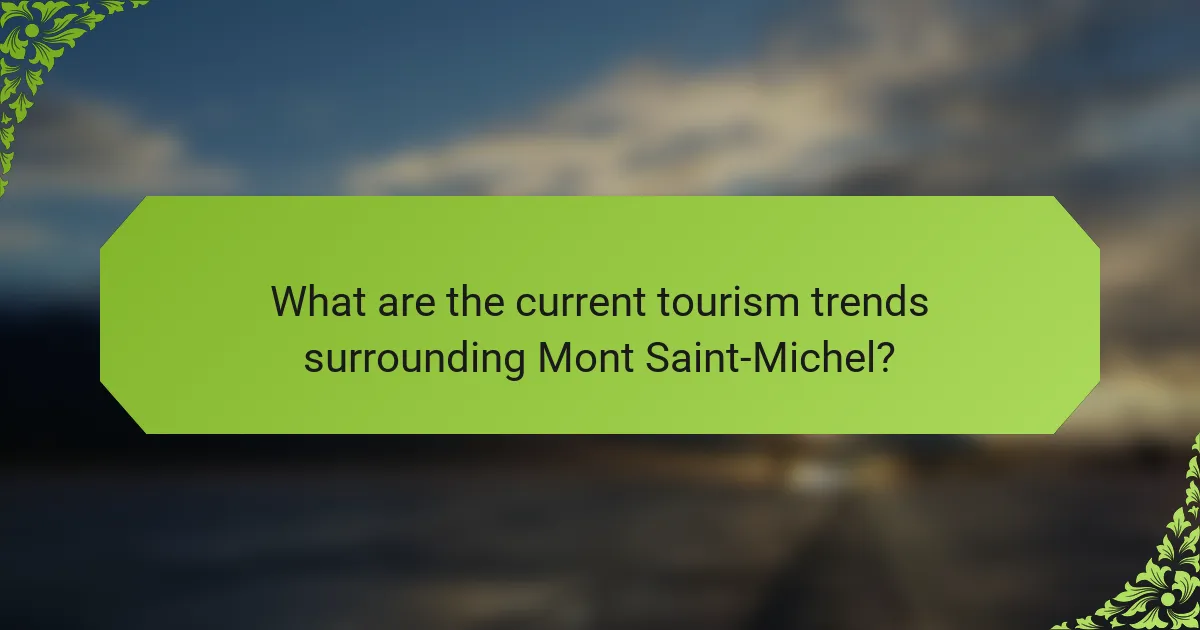
What are the current tourism trends surrounding Mont Saint-Michel?
Current tourism trends surrounding Mont Saint-Michel include increased visitor numbers, sustainable tourism practices, and digital engagement. The site attracts approximately 3 million tourists annually, with a growing emphasis on eco-friendly travel options. Visitors increasingly seek immersive experiences, such as guided tours that highlight the site’s architectural marvel and historical significance. Additionally, social media plays a crucial role in promoting Mont Saint-Michel, influencing travel decisions and encouraging shared experiences among tourists.
How has visitor behavior changed in recent years?
Visitor behavior at Mont Saint-Michel has shifted significantly, focusing more on sustainable tourism and digital engagement. Recent years show an increase in visitors seeking immersive experiences, such as guided tours that highlight the site’s architectural marvels and historical relevance. Additionally, the rise of social media has influenced travel planning, with many tourists sharing their experiences online. This change indicates a preference for unique, shareable moments over traditional sightseeing. As a result, local businesses have adapted by enhancing services that cater to these evolving visitor expectations.
What are the peak seasons for tourism at Mont Saint-Michel?
The peak seasons for tourism at Mont Saint-Michel are spring and summer. During these months, visitors enjoy pleasant weather and numerous events. Spring, particularly from April to June, attracts tourists with blooming flowers and mild temperatures. Summer, from July to August, sees the highest visitor numbers due to school holidays and various festivals. The unique tidal changes also enhance the site’s allure during these times, making it a popular destination.

What unique experiences does Mont Saint-Michel offer to visitors?
Mont Saint-Michel offers visitors a unique blend of breathtaking architecture, rich history, and stunning natural landscapes. Visitors can explore the medieval abbey, which showcases Gothic and Romanesque architectural styles. The island’s tidal variations create dramatic scenery, allowing for picturesque views and photography opportunities. Guided tours provide insights into the site’s historical significance, including its role as a pilgrimage destination. Additionally, the charming village atmosphere, with quaint shops and local cuisine, enhances the overall experience.
Which activities are must-dos when visiting?
Visiting Mont Saint-Michel requires exploring its stunning architecture, rich history, and vibrant tourist activities. Key must-dos include walking the ramparts for panoramic views, touring the abbey to appreciate its Gothic design, and enjoying local cuisine at nearby restaurants. Engaging with guided tours enhances understanding of its historical significance. Lastly, witnessing the tidal changes offers a unique natural spectacle that defines the island’s charm.
What local cuisine can tourists enjoy in the area?
Tourists can enjoy local cuisine such as galettes, seafood, and apple-based desserts in Mont Saint-Michel. Galettes, made from buckwheat flour, are a regional specialty. Fresh seafood, including mussels and oysters, reflects the area’s coastal location. Additionally, desserts like tarte tatin showcase local apples. These dishes highlight the unique culinary heritage influenced by the region’s history and geography.
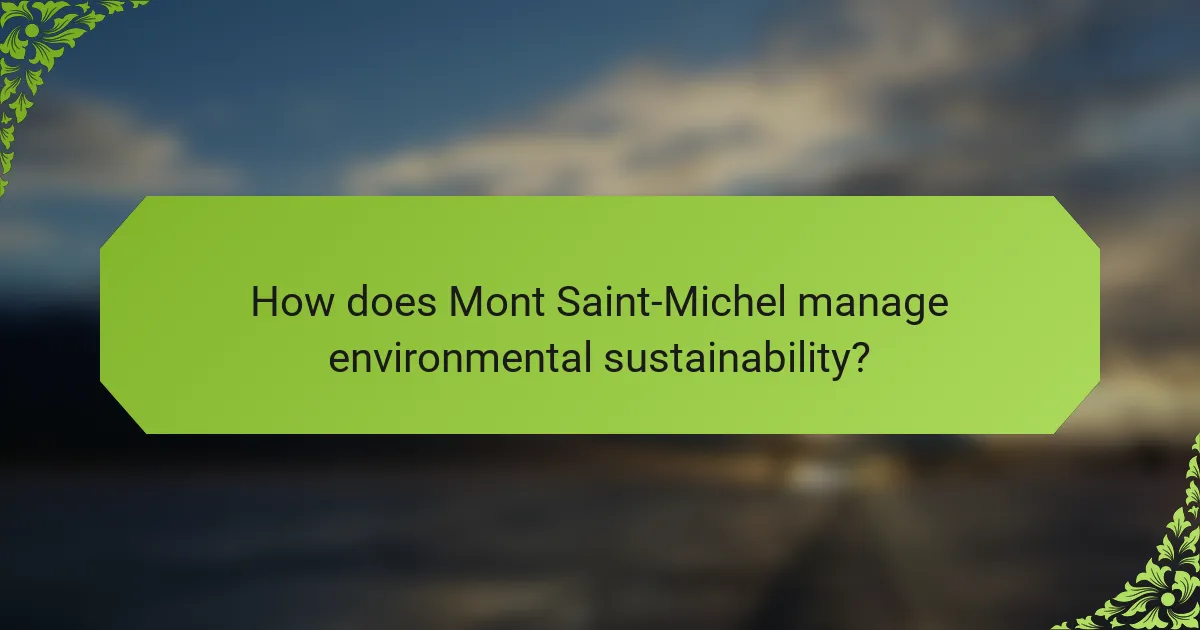
How does Mont Saint-Michel manage environmental sustainability?
Mont Saint-Michel employs various strategies to manage environmental sustainability. The site integrates renewable energy sources, such as solar panels, to reduce carbon emissions. It also focuses on preserving local biodiversity by implementing strict regulations on construction and tourism activities. Waste management systems are in place to minimize pollution, while educational programs raise awareness about environmental conservation among visitors. Additionally, the use of sustainable materials in restoration projects helps maintain the site’s integrity. Overall, Mont Saint-Michel exemplifies a commitment to balancing tourism with ecological responsibility.
What challenges does it face regarding preservation?
Mont Saint-Michel faces significant challenges regarding preservation due to environmental factors and tourism pressure. Erosion from tidal changes threatens its structural integrity. Increased visitor numbers strain resources and maintenance efforts, leading to wear on the site. Additionally, climate change poses risks through rising sea levels and extreme weather events, complicating preservation strategies. These factors collectively challenge the site’s ability to maintain its architectural and historical significance.
Which initiatives are in place to protect its ecosystem?
Mont Saint-Michel is protected by several initiatives aimed at preserving its unique ecosystem. These include strict regulations on construction and tourism, habitat restoration projects, and ongoing monitoring of environmental impacts. The establishment of a buffer zone around the island helps maintain its natural surroundings. Additionally, local authorities collaborate with conservation organizations to promote sustainable tourism practices. These efforts ensure the preservation of both the architectural integrity and the ecological health of this historical site.
What best practices can visitors adopt to minimize their impact?
Visitors can minimize their impact on Mont Saint-Michel by following these best practices. Respecting the site’s historical significance and natural environment is essential for sustainable tourism.
1. Stick to designated paths to protect the surrounding ecosystem.
2. Avoid littering and use designated waste disposal areas.
3. Limit noise levels to preserve the tranquility of the area.
4. Support local businesses to promote sustainable economic practices.
5. Educate yourself about the site’s history and cultural significance before visiting.
6. Visit during off-peak hours to reduce overcrowding and enhance the experience for all.
